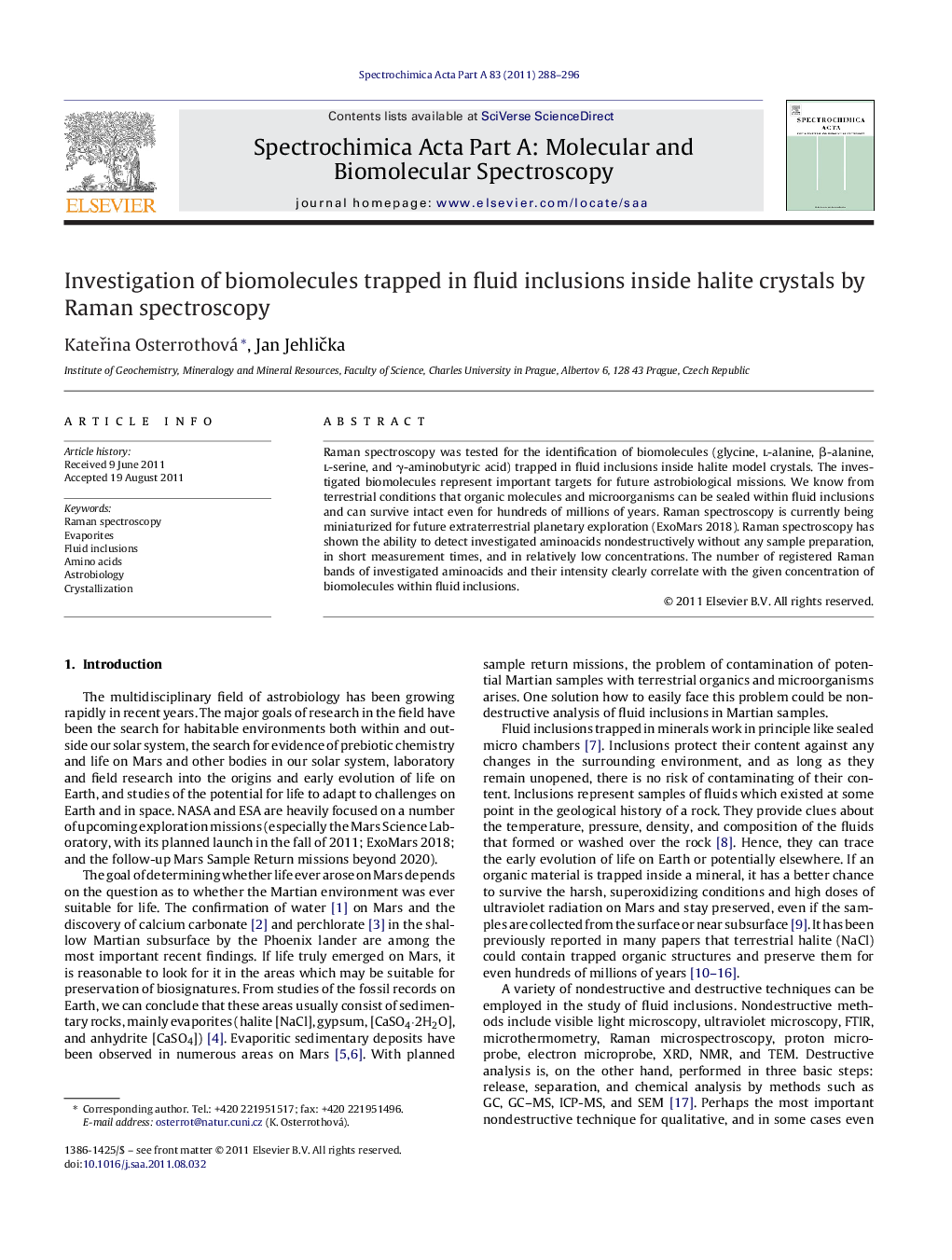| Article ID | Journal | Published Year | Pages | File Type |
|---|---|---|---|---|
| 1235181 | Spectrochimica Acta Part A: Molecular and Biomolecular Spectroscopy | 2011 | 9 Pages |
Raman spectroscopy was tested for the identification of biomolecules (glycine, l-alanine, β-alanine, l-serine, and γ-aminobutyric acid) trapped in fluid inclusions inside halite model crystals. The investigated biomolecules represent important targets for future astrobiological missions. We know from terrestrial conditions that organic molecules and microorganisms can be sealed within fluid inclusions and can survive intact even for hundreds of millions of years. Raman spectroscopy is currently being miniaturized for future extraterrestrial planetary exploration (ExoMars 2018). Raman spectroscopy has shown the ability to detect investigated aminoacids nondestructively without any sample preparation, in short measurement times, and in relatively low concentrations. The number of registered Raman bands of investigated aminoacids and their intensity clearly correlate with the given concentration of biomolecules within fluid inclusions.
Graphical abstractRaman spectrum (1800–200 cm−1 range) of glycine trapped in fluid inclusions inside halite model crystals: (a) 0.5 M aqueous solution of glycine, (b) 0.1 M aqueous solution of glycine and (c) 0.05 M aqueous solution of glycine. Scale bar is 20 μm.Figure optionsDownload full-size imageDownload as PowerPoint slideHighlights► Biomolecules (glycine, l-alanine, β-alanine, l-serine, and γ-aminobutyric acid) were trapped in fluid inclusions inside laboratory-grown halite crystals. ► Various concentrations of biosignatures inside fluid inclusions were prepared. ► Raman microspectroscopy was employed to detect selected amino acids. ► The detection limit of glycine and l-alanine in fluid inclusions was 0.05 M. ► Meanwhile, β-alanine and l-serine were 0.1 M and γ-aminobutyric acid only 0.5 M.
